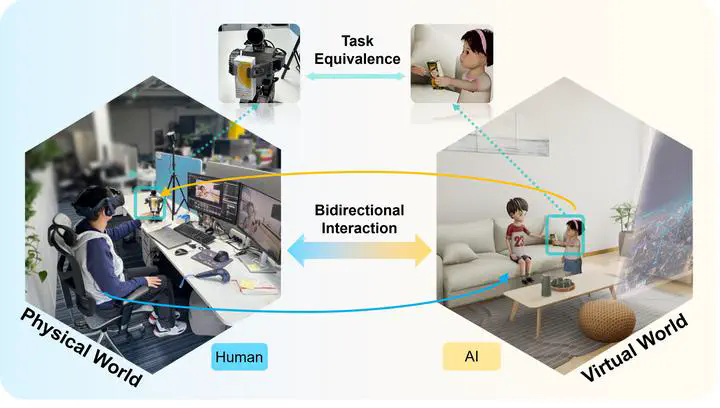
Abstract
Artificial intelligence (AI) has revolutionized human cognitive abilities and facilitated the development of new AI entities capable of interacting with humans in both physical and virtual environments. Despite the existence of virtual reality, mixed reality, and augmented reality for several years, integrating these technical fields remains a formidable challenge due to their disparate application directions. The advent of AI agents, capable of autonomous perception and action, further compounds this issue by exposing the limitations of traditional human-centered research approaches. It is imperative to establish a comprehensive framework that accommodates the dual perceptual centers of humans and AI agents in both physical and virtual worlds. In this paper, we introduce the symmetrical reality framework, which offers a unified representation encompassing various forms of physical-virtual amalgamations. This framework enables researchers to better comprehend how AI agents can collaborate with humans and how distinct technical pathways of physical-virtual integration can be consolidated from a broader perspective. We then delve into the coexistence of humans and AI, demonstrating a prototype system that exemplifies the operation of symmetrical reality systems for specific tasks, such as pouring water. Subsequently, we propose an instance of an AI-driven active assistance service that illustrates the potential applications of symmetrical reality. This paper aims to offer beneficial perspectives and guidance for researchers and practitioners in different fields, thus contributing to the ongoing research about human-AI coexistence in both physical and virtual environments.